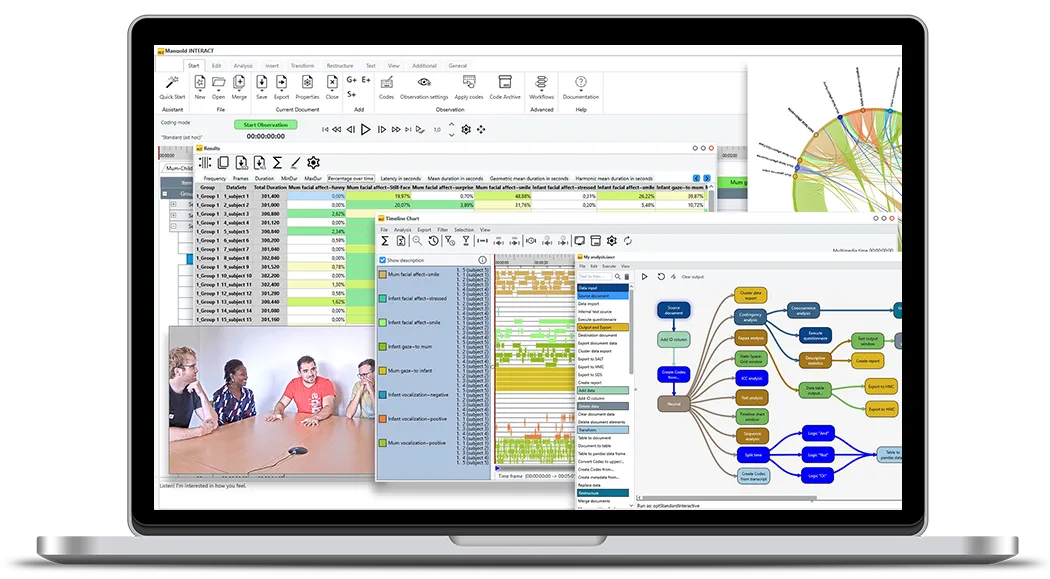Research · 5 min read
Paddock Fencing - Study on Animal-Friendly Horse Enclosures
Examining animal welfare aspects of electric fencing systems in horse paddocks - behavioral observation with Mangold INTERACT

The Impact of Electric Fencing on Equine Welfare in Paddock Environments - A Scientific Review
I. Introduction
The use of electric fencing is prevalent in modern equine management for creating and securing paddocks. While practical, its impact on the welfare and behavior of horses is a subject of ongoing research. A 2013 study by Mösenbacher-Molterer et al., presented at the 2nd Austrian Horse Conference, provides a detailed investigation into the animal welfare implications of energized paddock enclosures. This article synthesizes the key findings from that research, focusing on the physiological and behavioral responses of horses to partially electrified fencing compared to non-electrified controls.
II. Background and Previous Research
Prior studies have established a baseline for understanding how horses interact with electric fences. Research from Germany (Moors et al., 2010) found no significant difference in the duration of time horses spent in paddocks with either electric wire (“Elektrolitze”) or zinc pipe fencing. However, it did note a marked reduction in direct social contact between horses in adjacent enclosures, as the animals learned to avoid the immediate vicinity of the fence. Similarly, a Swiss study (Glauser et al., 2012) observed no significant physiological changes in horses but found that the total usable area of the paddock was effectively reduced, as horses actively avoided the perimeter (Randzone). This active avoidance was interpreted as a successful adaptation to the environment, resulting in a stress-free state once the boundary was learned.
III. Methodology of the Austrian Study
The project, conducted at the training stables of the Pferdezentrum Stadl Paura, was designed to build upon this existing knowledge.
- Subjects: The study involved 24 young (3-7 years old) and inexperienced horses of diverse breeds (Warmbloods, Tinker, Arabian, Noriker, Lipizzaner). The cohort included 12 mares, 3 geldings, 2 recently castrated stallions, and 1 stallion.
- Experimental Design: A controlled experiment was conducted in the early summer of 2012. Two variants were tested: a “Teil-Strom” (partially electrified) paddock and a “kein Strom” (non-electrified) control group. The paddocks were identical in size (3.5m x 3.5m = 12.25m²), attached to stalls of the same dimension. The fencing consisted of 4-rail zinc piping at a height of 1.60m. In the “Teil-Strom” group, a single electrified wire was added at the highest point (1.80m).
- Data Collection:
- Physiological Data: Heart rate (HR) and heart rate variability (HRV) were continuously measured from 07:00 to 17:00 using Polar Equine RS800CX monitors. Data was processed with Kubios software to analyze stress levels.
- Behavioral Data: Approximately 300 hours of video footage were recorded. Two observation days per horse (the first and last day of the 7-8 day trial period) were analyzed from 07:00-09:00 and 13:00-17:00 to quantify specific behaviors.
- Behavioral Data Analysis: The Mangold INTERACT software was used to code any analyze the video recordings.
Results
I. Physiological Findings
The study found no statistically significant difference in the key heart rate metrics between the “Teil-Strom” and “kein Strom” groups.
- Mean Heart Rate (HF): 37.38 bpm (Teil-Strom) vs. 38.95 bpm (kein Strom), p=0.4576.
- Heart Rate Variability (RR-Interval): 1.683 ms (Teil-Strom) vs. 1.585 ms (kein Strom), p=0.1862. This suggests that the presence of a partial electric current did not induce a measurable chronic physiological stress response. However, the researchers noted that the High-Frequency (HF) component of HRV, which is indicative of parasympathetic nervous system activity (relaxation), was very low in both groups compared to literature values. This implies a general level of stress or arousal associated with the paddock environment itself, independent of the fencing type.
II. Behavioral Findings
Behavioral analysis revealed significant differences in activity and social interaction.
- Social Contact: Positive social contact, specifically mutual grooming (“Kraulen”), was drastically reduced in the electrified group. Horses in the “kein Strom” group engaged in grooming for an average of 68.34 seconds during the 6-hour observation period, compared to only 11.73 seconds in the “Teil-Strom” group.
- Paddock vs. Box Time: Horses in the “Teil-Strom” group spent significantly more time standing in the paddock (2.12 hours) and less time inside the box (3.52 hours) compared to the “kein Strom” group (1.54 hours standing, 4.33 hours in box). This indicates that the electrified fence, while limiting perimeter-based social interaction, did not deter the horses from using the paddock space for movement and standing.
- Fence Interaction: Direct contact with the electric fence was minimal. In over 144 hours of analyzed video for the “Teil-Strom” group, only 6 instances of electric shock were observed, demonstrating rapid avoidance learning.
Conclusions and Implications
The study by Mösenbacher-Molterer et al. leads to several key conclusions for evidence-based equine management:
- Partial electrification is a viable management tool. It does not appear to cause significant physiological stress and may even encourage horses to spend more time moving in the paddock rather than remaining in their stalls.
- Behavioral trade-offs exist. The primary cost of electric fencing is a reduction in positive social behaviors that occur near the fence line, such as mutual grooming.
- Stable social groups may not require electric fencing. For compatible, established groups of horses, robust physical barriers are sufficient for containment in small paddocks, allowing for unrestricted social interaction.
- Paddock size is critical for fully electrified systems. Based on previous literature showing avoidance of the perimeter, the study recommends that paddocks using fully electrified elements should be at least 1.5 times the minimum required stall area to provide adequate usable space.
INTERACT: One Software for Your Entire Observational Research Workflow
From audio/video-based content-coding and transcription to analysis - INTERACT has you covered.

The study contains final recommendations for paddock keeping of horses regarding size, boundaries, and animal welfare, which were presented to the professional audience at the 2nd Austrian Horse Conference.
Mösenbacher-Molterer, I., Straub, I., Neumitka, D. & Troxler, J.: Investigation of electrified paddock enclosures in horse keeping with regard to animal welfare. Presentation at the 2nd Austrian Horse Conference, February 23, 2013 Study_AnimalFriendlyPaddockFencing (pdf, 380kb)